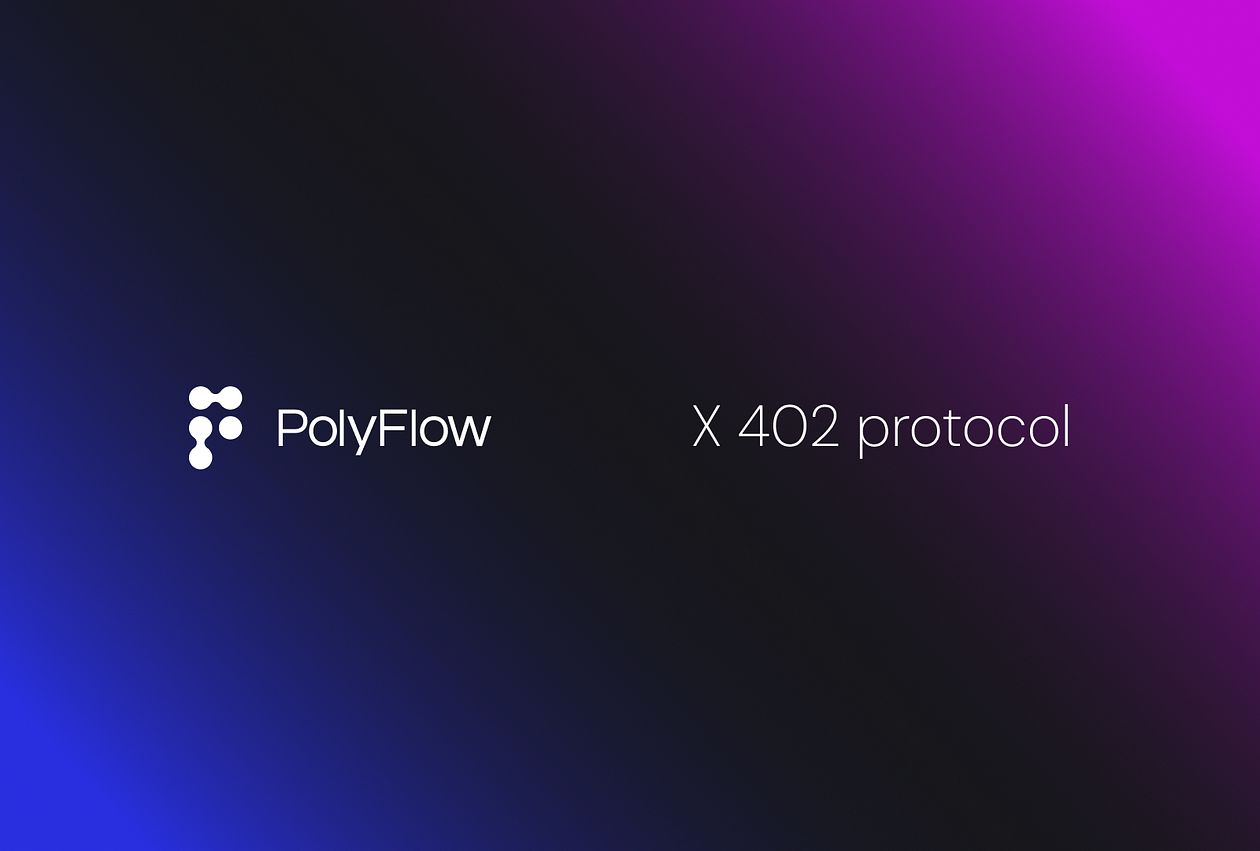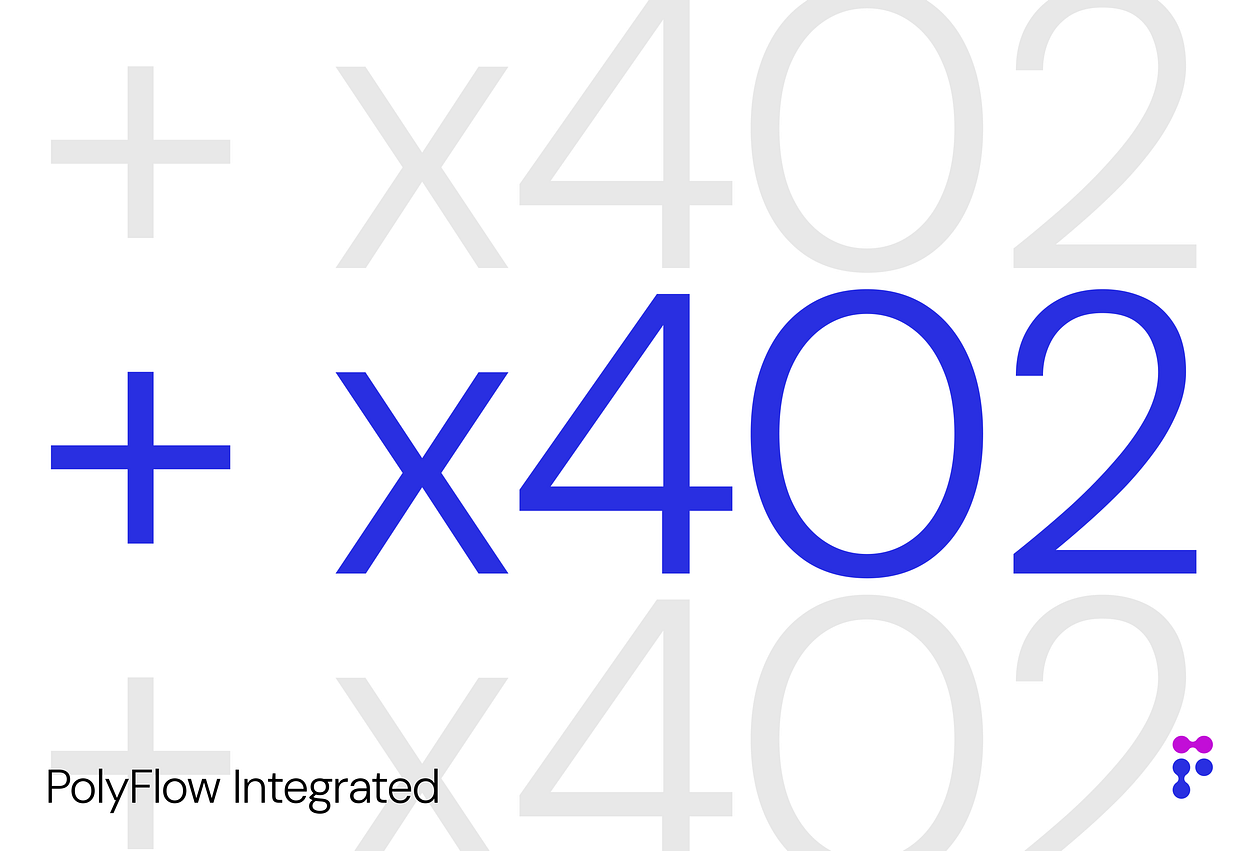PolyFlow Integrates x402 to Power the Next Generation of AI Agent Payments
Stablecoin Payments in Real Scenarios The real challenge of stablecoin payments doesn’t lie in technology or compliance, but in the “scenario.” Demand always arises from scenarios — just like how water can fetch a gold price only in the desert. Looking back at the Web2 era, the rise of Alipay wasn’t born out of thin air; it was tightly bound to Taobao’s e-commerce scene, solving the trust and funding issues of the “last mile of online buying and selling.” Stablecoins have moved beyond proof-of

Stablecoin Payments in Real Scenarios
The real challenge of stablecoin payments doesn’t lie in technology or compliance, but in the “scenario.” Demand always arises from scenarios — just like how water can fetch a gold price only in the desert. Looking back at the Web2 era, the rise of Alipay wasn’t born out of thin air; it was tightly bound to Taobao’s e-commerce scene, solving the trust and funding issues of the “last mile of online buying and selling.”
Stablecoins have moved beyond proof-of-concept; mass adoption now hinges on one thing — live business flows.
At PolyFlow we turn that theory into ledger entries: our stablecoin payment rails move Latam soy and Asian electronics in USDC, Pelago Connect’s encrypted network lets Shopify merchants price in stablecoins yet settle in fiats, and our supply chain finance vault advances working capital to exporters the moment bills of lading hit the blockchain.
Strip away these real-world transactions and stablecoin payments revert to nothing more than hashes spinning in a vacuum. The main battleground for stablecoin payments is concentrated in person-to-person interaction scenarios. However, a more explosive potential mine remains unexplored systematically — that is the interaction between AI Agents. Fortunately, PolyFlow has already laid the groundwork in advance through its crypto payment gateway.

The AI Agent Economy Spurs New Demand
The AI Agent economy is opening up a whole new canvas of demand. Machines are no longer just tools but are becoming “digital customers” capable of placing orders, negotiating, and settling payments on their own. Gartner estimates that by 2030, transactions directly or indirectly influenced by these “machine customers” will reach a staggering $30 trillion. The World Economic Forum provides a more detailed market forecast, projecting growth from $7.8 billion in 2025 to $50.3 billion in 2030, with a compound annual growth rate of 45%.
As AI Agents become the principal entities in transactions, payment systems must adopt a “machine language”: instant confirmations within seconds, thousands of micropayments per second, 24/7 uninterrupted operations, programmable logic for automatic payments upon condition fulfillment, and a plug-and-play global standard that transcends legal jurisdictions. Traditional banking networks are cumbersome and costly in the face of these demands, whereas blockchain architecture and stablecoin payments over the internet fit perfectly.
From the x402 Protocol to Crypto Payment Gateways
In September 2025, Coinbase and Cloudflare jointly launched the x402 open payment protocol, revitalizing the long-dormant HTTP status code 402 — “Payment Required” — thus opening the final gateway for internet-native payments. This protocol embeds blockchain and stablecoins into the communication layer, enabling near-zero fees and instant transactions, allowing value to be routed like data packets. The x402 protocol provides a lightweight channel for machines and AI agents, making micropayments a default, seamless, and underlying service of the internet.
While the x402 protocol provides the communication and transaction layer for payments, AI agents still face challenges in managing incoming payments — including custody, settlement, compliance, and multi-chain aggregation — which require a higher-level crypto payment gateway.
Get PolyFlow’s stories in your inbox
Enter Pelago Connect, a revolutionary plug-and-play crypto payment gateway powered by PolyFlow. Now, it is integrated with x402 to support multiple cryptocurrencies and blockchain networks, providing AI agents with a seamless, cost-effective payment solution with instant settlements and assured compliance.
Traditional financial systems require KYC for account opening, which is unfeasible for AIs without passports or social security numbers, thus preventing them from accessing bank accounts.
Pelago Connect’s embedded PID module enables Know Your Agent (KYA) for AI agents, linking their information with the identity of the agent’s user, potentially forming the foundation for future AI-human interactions.
Moreover, the integrated PLP module ensures AI agents have self-custody of funds and compliance, providing them with autonomous “wallets” and “cash flow.”
Conclusion
As we look to the future, the unstoppable rise of AI in the intelligent era is clear. Once an AI Agent acquires an on-chain identity and account, it genuinely gains property rights, revealing a new payment arena with potential to exceed $10 trillion. Leading this transformation is PolyFlow’s crypto payment gateway, Pelago Connect, which is shifting the payment landscape from human interaction to agent interaction.
At PolyFlow, our mission is to develop solutions that seamlessly integrate traditional systems with blockchain technology, gradually transforming everyday payments and financial activities to ensure that every transaction is meaningful and every payment counts.

SOCIALS
To find out more about PolyFlow and keep up with our latest developments, follow the official channels.
🎮 DAPP | 💬 Global Community | 👾 Discord| 🐦 Twitter/X | 🌐 Website
CONTACT US
support@polyflow.tech